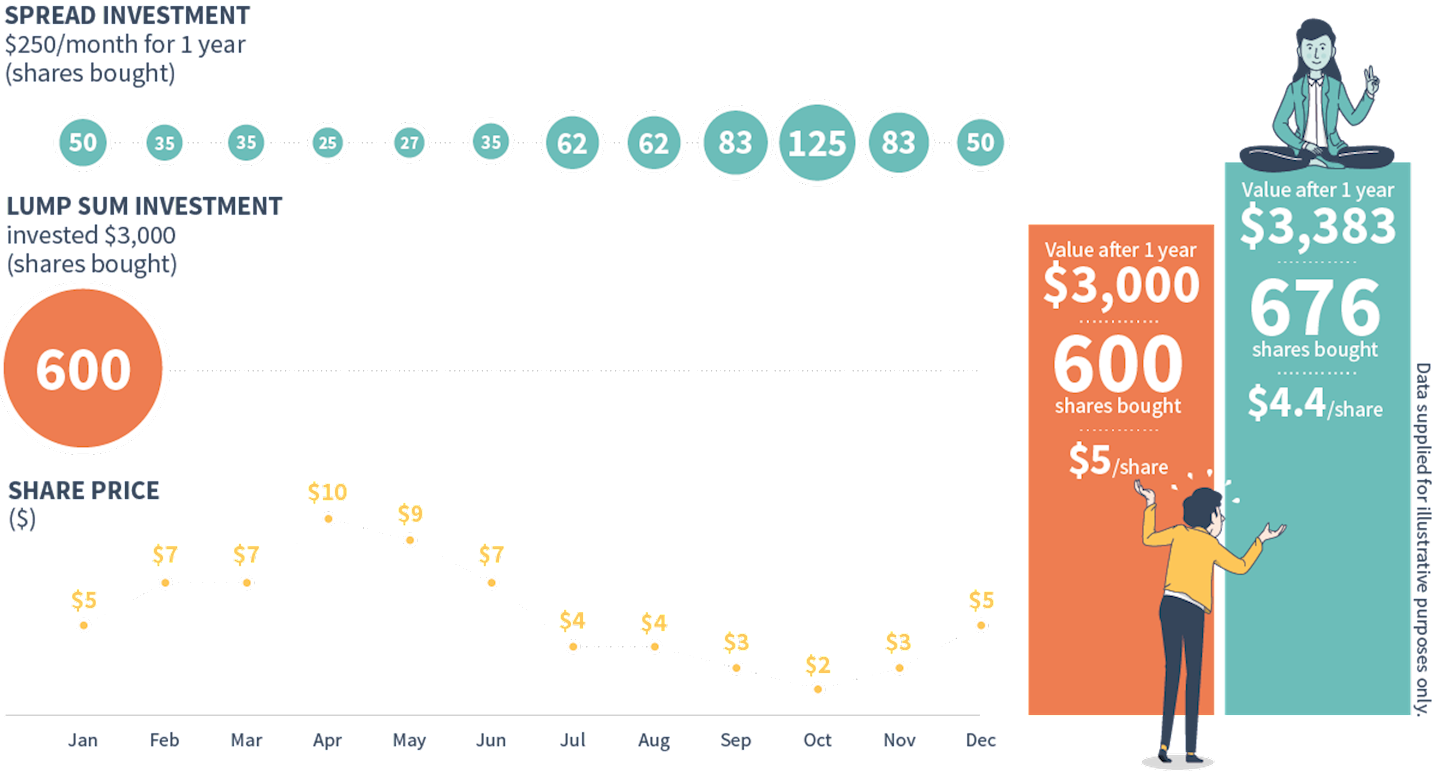You are using an outdated browser. Please upgrade your browser to improve your experience.
Article | 17 May 2022 | Investments
With increasing market uncertainty and volatility, it’s natural that investors may be looking for ways to mitigate investment losses.
As with any investment journey, there are periods when prices can fall as well as rise. Trying to capture the right time to sell or buy can be both difficult and stressful. That’s where cost averaging comes in. It’s an investment approach with the goal of reducing the impact of volatility on large investments.
In effect a tool used by investors to build their savings and wealth over time, cost averaging usually relies on investing the same amount on a monthly basis. It can provide a great way of getting into a routine, helping to smooth out the impact of market highs and lows on your portfolio over time. It’s also helpful if you don’t have a lump sum to invest.
Through buying assets at different prices rather than at the one price, it reduces the risk of incurring a substantial loss resulting from investing the entire ‘lump sum’ prior to a fall in the market and helps take the emotion out of investment decisions.
However, it’s important to remember that you may not necessarily benefit in this way using cost averaging and that there exists a potential downside. For example, if you are investing at regular intervals in a continuously rising market, you will miss out on some of that market’s growth.
The below illustrative example helps highlight how cost averaging works.